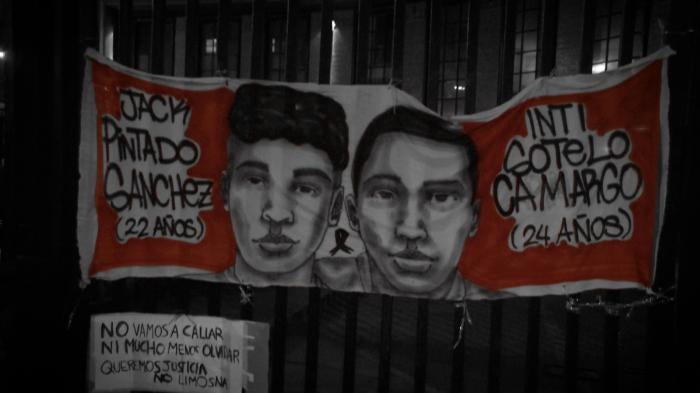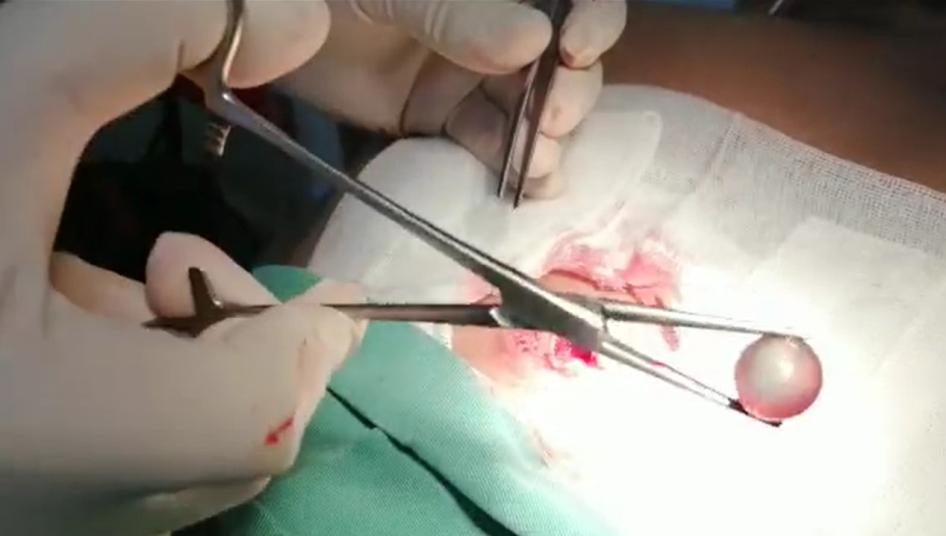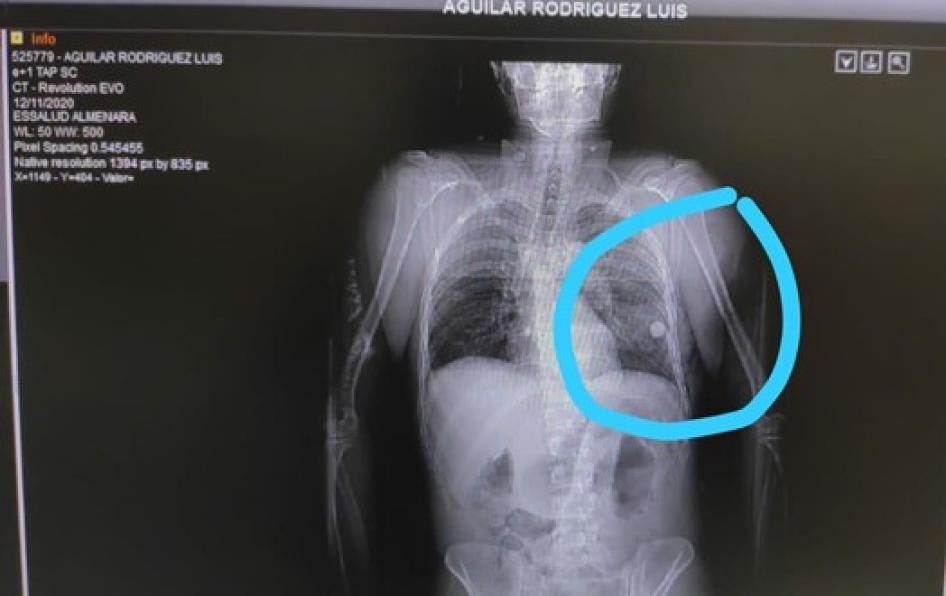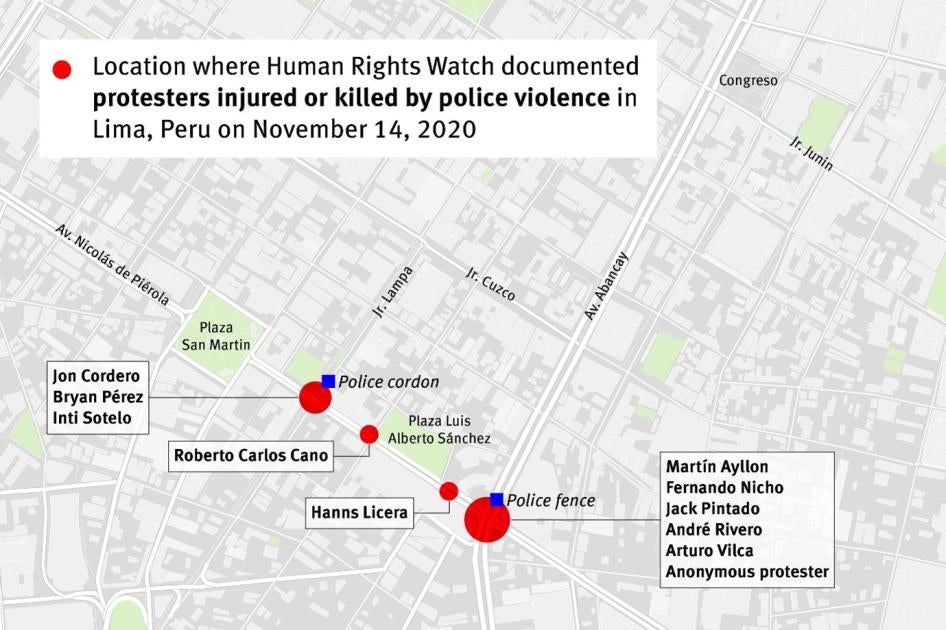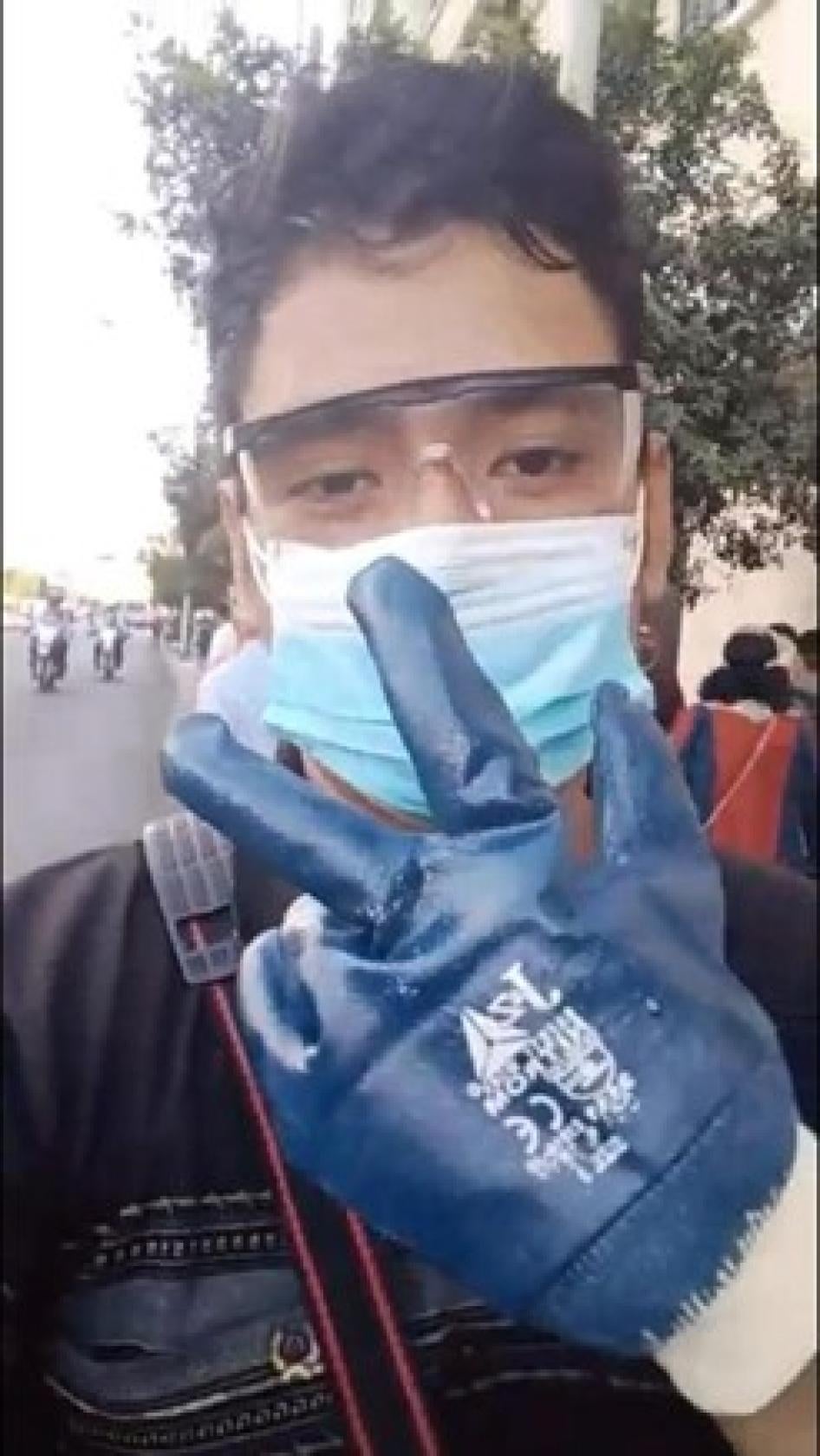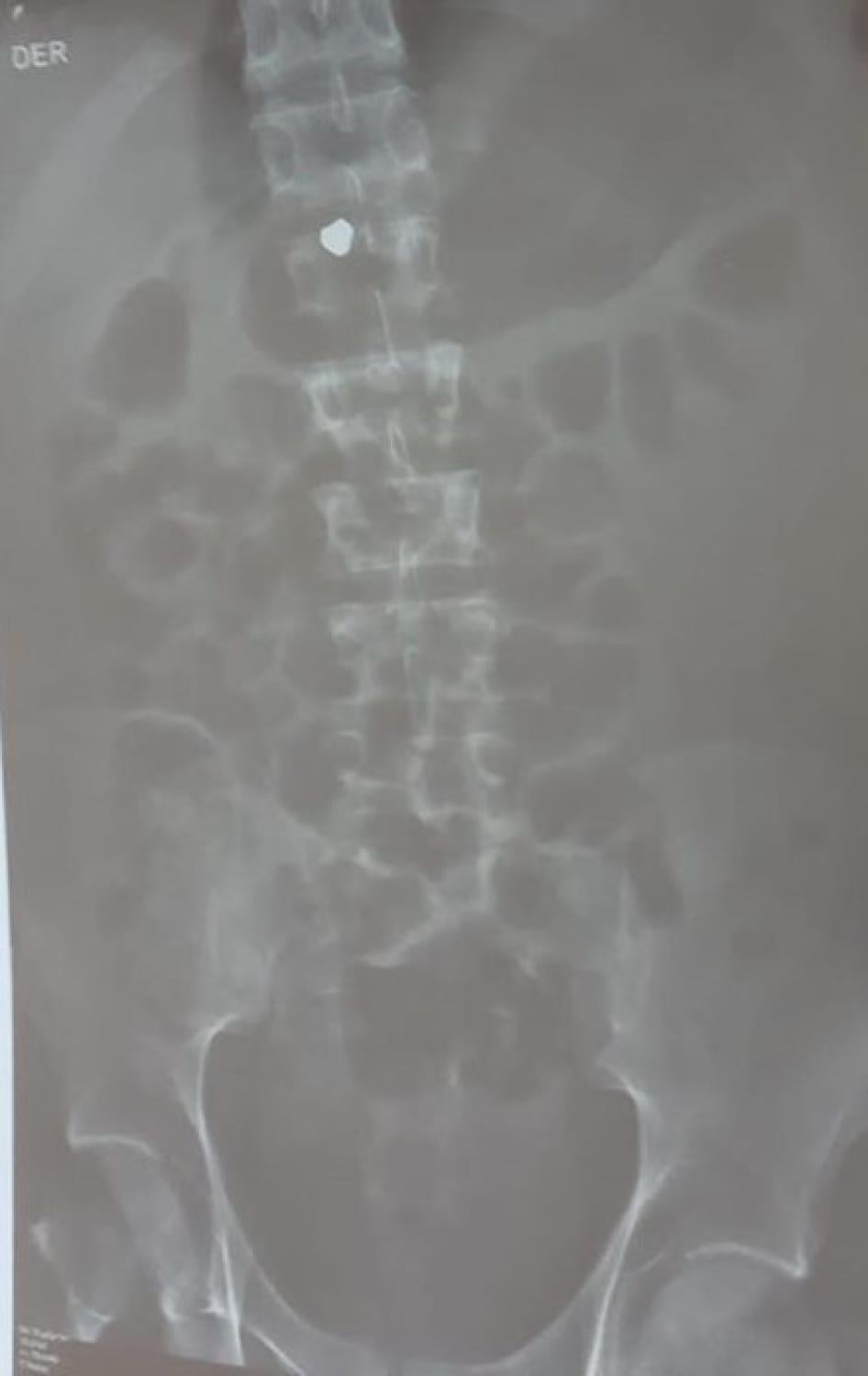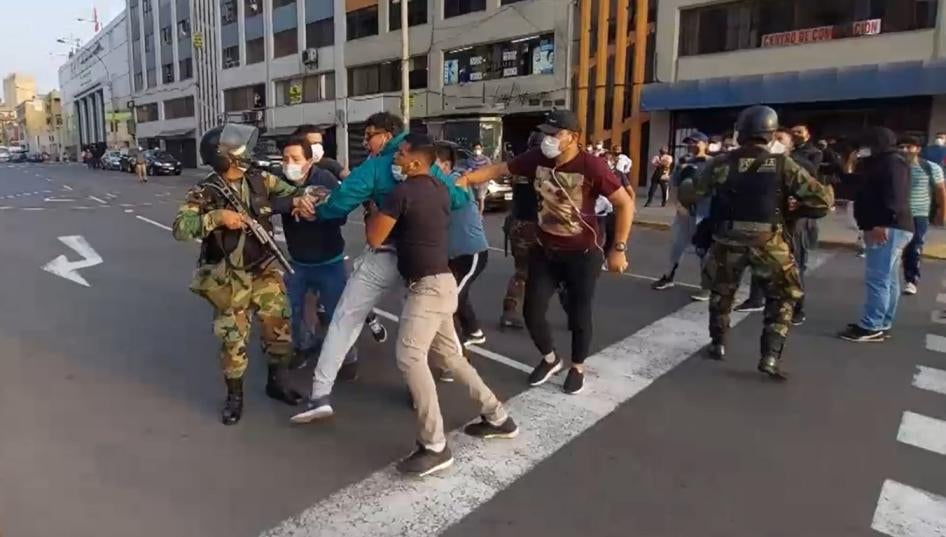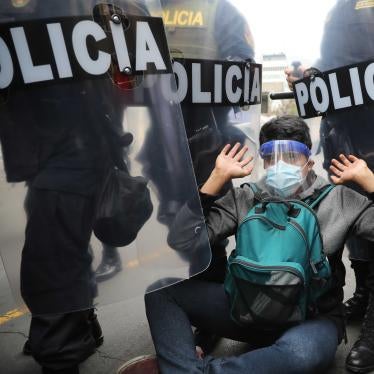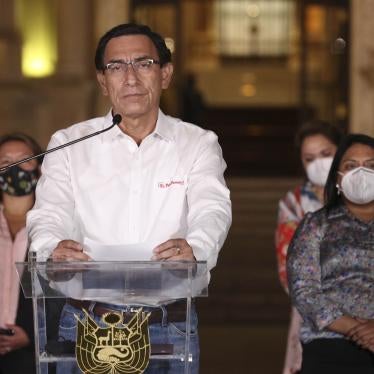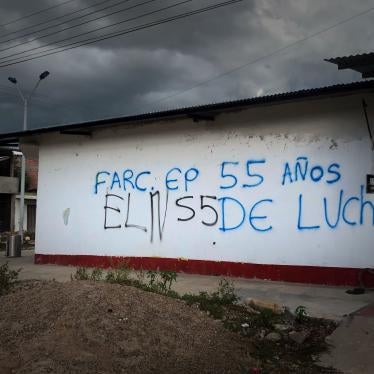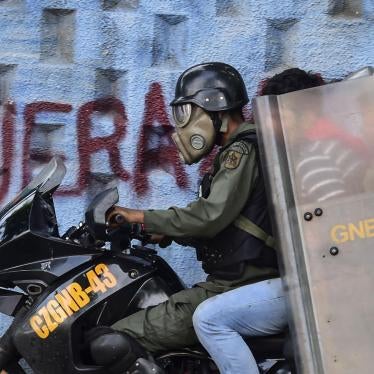(Lima) – The Peruvian National Police committed multiple abuses against mostly peaceful demonstrators protesting the ousting of then-President Martín Vizcarra in November 2020, Human Rights Watch said today. Peru’s interim President Francisco Sagasti, Congress, and the Police Command should adopt reforms to ensure that officers respect the right to peaceful assembly.
Two protesters were killed and over 200 were injured, some seriously, in the protests, between November 9 and 15. Witness statements and other evidence Human Rights Watch collected indicate that police repeatedly used excessive force against protesters. Injuries apparently caused by the impact of teargas cartridges and videos of police shooting teargas straight into the crowd show that they recklessly used riot guns. In addition, the evidence strongly suggests that officers used 12-gauge shotguns to fire lead pellets and glass marbles directly at people, violating their own protocols, which prohibit those munitions.
“We have gathered worrying evidence of excessive use of police force against demonstrators protesting the very questionable removal of president Vizcarra,” said José Miguel Vivanco, Americas director at Human Rights Watch. “President Francisco Sagasti has taken an important step by convening a commission to improve police performance. He should lead efforts to prevent future abuses against peaceful demonstrators at the hands of the police who should be protecting them.”
In his inauguration speech on November 17, interim President Francisco Sagasti said his government would work to prevent further police abuse and promised justice to victims. On November 24, he created a commission made up of government officials and civil society to recommend, in 60 days, measures “to modernize and strengthen” the police.
On November 9, Congress ousted President Vizcarra from office through a questionable legal process, claiming that he lacked “moral capacity” because there is an ongoing corruption investigation against him. He has not been charged with any crime. Many members of Congress who voted in favor of his removal are themselves under criminal investigation, including for corruption. Vizcarra had pushed forward various anti-corruption initiatives that affected them.
Thousands of Peruvians took to the streets between November 9 and 15 to protest Vizcarra’s removal. While demonstrations occurred without incident in many locations throughout the country, there is substantial evidence that in Lima, police used excessive and reckless force against protesters. The protests led to the resignation of Manuel Merino, the head of Congress who was sworn in as president after Vizcarra’s ousting. On November 16, members of Congress elected Sagasti, who had voted against Vizcarra’s removal, as president of Congress and, in accordance with Peru’s Constitution, he became interim president.
Human Rights Watch interviewed 76 people during a visit to Lima in late November and by phone, including victims, their relatives and lawyers, witnesses, and human rights defenders. Human Rights Watch also met with the justice minister, the interior minister at that time, the chief prosecutor, the police commander, the police inspector general, and a senior official from the Ombudsperson’s Office, and reviewed more than 200 videos posted on social media, as well as media reports and publications by local rights groups.
Many of the injuries and the two killings occurred in a two-block area in downtown Lima on the evening of November 14.
“We were shouting. Nobody was throwing any rocks,” Arturo Vilca, 24, one of the protesters, told Human Rights Watch. “I heard a whistling sound and thought it was a bomb. I looked to the right and saw a police officer who had fired at me … He wanted to kill me.”
Vilca was struck at close range by six pellets on his back, left arm, and head. A seventh pellet went through his neck bursting a blood vessel. Had it hit him slightly to the side and affected the carotid arteries, he would have died, doctors later told his family. They also said the pellets were lead, not rubber. “I don’t want this to remain in impunity,” Vilca said.
The Health Ministry said that more than 200 people received medical care in Lima in connection with the demonstrations. Of those, 17 remained in the hospital for at least a week due to the severity of their injuries, such as head traumas, injuries to various organs caused by pellets, and one case of a projectile lodged in a protester’s spinal cord. Peru’s National Association of Journalists documented at least 10 cases of injuries to journalists covering the protests, apparently by projectiles fired by police, and 13 cases in which police either beat reporters or tried to confiscate their equipment.
While demonstrations were largely peaceful, some protesters threw rocks at the police. The interior minister told Congress that 24 police officers suffered injuries, all minor.
In addition to uniformed police, commanders deployed the Urban Unit of Tactical and Operative Intelligence to the protests. Commonly known as the “Terna Group,” this plainclothes police unit is charged with fighting common crime. It is not trained for crowd control, general César Cervantes, the chief police commander appointed by the Sagasti government, told Human Rights Watch on November 26. Members wear no name tags, making investigations into rights abuses harder. General Cervantes said he would issue an order banning the deployment of plainclothes police for crowd control.
Police held at least 57 people in custody at police stations in connection with the protests in Lima, according to data the National Police provided to the Ombudsperson’s Office. Of those, at least 39 were held based on a legal provision that allows officers to keep someone for no more than four hours to check their identity if they do not have ID papers with them. That provision is overbroad and vulnerable to abuse, Human Rights Watch said. Some were detained by Terna officers.
Several investigations are under way. The chief prosecutor has opened an investigation into the role of Merino, as well as the people he selected as prime minister and interior minister, in the alleged abuses and another investigation into the police officers who allegedly carried out the abuses.
The Interior Ministry has opened a preliminary disciplinary investigation into two police generals and a colonel who held key positions during the protests. However, any decision on disciplinary sanctions will ultimately be made by the police inspector general, an active lieutenant general. The disciplinary procedures used by Peru’s National Police are inadequate to ensure independence and transparency, Human Rights Watch said.
General Cervantes told Human Rights Watch on November 26 that he had transferred the chief of the Lima police region, but had not taken any action against other officers, even those deployed at locations where protesters were injured or killed. They continue to carry out their normal duties, he said.
Human Rights Watch recommends that Peruvian authorities:
- Ensure criminal and disciplinary accountability for police abuses during the November 2020 protests.
- Overhaul the police disciplinary system to ensure independence and transparency.
- Review police crowd-control protocols, practices, equipment, and training.
- Ban the deployment of plainclothes police to infiltrate protests and arrest demonstrators.
- Revoke laws that protect abusive policing, including the 2020 “Police Protection Act” and a 2014 law that grants legal immunity to police who kill or injure people in “fulfillment of their duty.”
For detailed recommendations and further information on the Human Rights Watch findings, please see below.
Arbitrary Dispersal of Protests and Excessive Use of Force
Under international human rights law, authorities should protect peaceful assemblies, and not disperse them even if they believe them to be unlawful. They should avoid using force unless necessary and proportionate, to respond to specific incidents of violence.
The demonstrations in Lima between November 9 and 15 were overwhelmingly peaceful, yet the police repeatedly sought to disperse them, often using force. Some protesters threw rocks at the police, but the police response was excessive and indiscriminate, causing hundreds of injuries and two deaths.
Use of Dangerous, Prohibited Munition
Peruvian police protocols allow the use of less lethal weapons, like teargas and shotguns with rubber pellets “when police personnel are directly attacked with blunt objects that endanger their physical safety or other people’s.” Human Rights Watch has not been able to find any technical analysis of the composition of the “rubber” pellets the police used. Laboratory analysis of “rubber” pellets used in Chile in 2019 showed that they were in fact mostly made of hard minerals and metal.
Evidence reviewed by Human Rights Watch strongly suggests that, in addition to rubber pellets and teargas, police fired glass marbles and lead pellets. Videos show police using their 12-gauge shotguns to shoot what appear to be single projectiles, which could be marbles, as they reflect light and do not appear to spread out as pellets would. Furthermore, doctors recovered glass marbles and metal fragments that appear to be lead from victims’ bodies, the coordinating prosecutor of the human rights department at the chief prosecutor’s office told Human Rights Watch. The pellets recovered from the bodies of the two protesters who were killed were made of lead, according to two ballistics reports by Peru’s Chief Prosecutor’s Office. The ballistics expert found that the marks on the pellet that pierced Inti Sotelo’s lung and killed him were consistent with having been fired from a standard shotgun, and did not appear consistent with firing from a makeshift or homemade weapon.
The Chief Prosecutor’s Office told Human Rights Watch that the police did not seize any weapons from protesters. In addition, none of the 39 protesters and witnesses Human Rights Watch interviewed said they had seen any weapons in the hands of protesters and none of the more than 200 videos Human Rights Watch reviewed shows any armed protester. The chief police commander told Human Rights Watch on November 26 that he had requested a ballistic analysis to determine whether glass marbles and lead pellets can be fired with the 12-gauge shotgun. The results of the analysis had not been made public as of December 17.
- Photojournalist Alonso Chero, 36, was photographing protesters at Nicolas de Piérola Avenue on November 12 with his back to a group of police officers armed with shotguns when he was shot with a glass marble, he said. In an operation recorded on video the next day, a doctor removed the glass marble from his back.
- Two protestors found Luis Aguilar Rodríguez, 26, bleeding from the chest on Abancay Avenue on November 12 and took him to a hospital, his mother said. After surgery, doctors told her that the object that had hit his chest, damaging his lungs, was a glass marble, which they removed. Aguilar Rodríguez left the hospital on November 30.
Human Rights Watch documented nine cases of victims apparently hit by pellets believed to be lead. In some cases, the multitude of injuries points to the use of shotguns at close range. While initially concentrated within a small radius as they are fired, pellets contained in cartridges expand away from each other to create a constellation of projectiles that can reach several decimeters in radius within a few meters of being fired. The more pellet injuries a victim has, the closer police officers are likely to have been when they opened fire.
Six of the nine cases documented occurred in a two-block area between Lampa Street, Nicolás de Piérola Avenue, and Abancay Avenue on the evening of November 14. This strongly suggests the same police unit is implicated in these cases.
- Jack Bryan Pintado Sánchez, 22, a protester, was killed at around 8 p.m. An autopsy revealed 10 lead pellets in his body, according to a document signed by a prosecutor requesting ballistic analysis of the projectiles. The two that entered his chest were fatal, a lawyer representing his family said.
- At around 9 p.m., Arturo Vilca, 24, a protester, saw a police officer shoot at him from the side at very close range, he said. Of the seven pellets that hit him, one entered his neck, bursting a blood vessel but missing the carotid arteries, and the others struck his back, left arm, and head. Doctors reconstructed the blood vessel but could not remove four pellets for fear of damaging his organs. Vilca’s sister said that a doctor said the pellets were lead, not rubber. Vilca was released from the hospital on November 28.
- At around 9:50 p.m., a pellet pierced the lungs of Inti Sotelo, 24, a protester, killing him, a lawyer representing his family said.
- Also at around 9:50 p.m., Jon Cordero, 24, a protester, was struck by a pellet that lodged in his spinal cord, paralyzing his lower body, his aunt said. Surgeons told the family that based on the X-rays they believed the pellet was lead, and said Cordero is unlikely ever to walk again.
- Bryan Martín Pérez Castro, 27, who had arrived at the protest with Cordero, said that at around 10:30 p.m. he felt something pierce his bicycle glove and hit two of his fingers. Doctors who performed two surgeries told Pérez they removed metal fragments from what they believed to be a lead pellet. Pérez was released from the hospital on November 26, without knowing whether his damaged fingers would recover mobility.
In other cases, it is still unknown what kind of projectile hit the victim. For example:
- Alexander Salas Condori, 28, a protester, said that about a dozen men wearing black and yellow vests that police often use on top of civilian clothes came out of an alley in front of a group of protesters in downtown Lima on November 15. They took off their vests and walked toward a contingent of uniformed police at the end of the street, Salas said. Protesters were calling them “ternas” – the common name for the plainclothes police unit. One of the men fired twice in the air with a handgun. Salas stayed behind but a few minutes later felt his chest “burning.” A projectile entered his chest, damaging his lung, kidney, and liver. Doctors initially told him it was a bullet but could not confirm because they could not remove it for fear of damaging his organs. Salas was released from the hospital on December 2.
Indiscriminate and Improper Use of Less Lethal Weapons
Police routinely used teargas against peaceful protesters between November 9 and 14, several protesters told Human Rights Watch.
On some occasions, it appears that police deployed teargas from riot guns in a reckless and dangerous manner. Police should fire teargas cartridges toward the sky, to slow down the heavy projectile’s trajectory in a downward arc meant to land on the ground. However, several protesters said that police officers shot teargas cartridges straight into the crowd, which can be lethal.
Human Rights Watch documented 11 cases of people apparently injured by teargas cartridges, including:
- Rubén Guevara, 27, a protester, was hit below the right eye with what he believes was a teargas cartridge at Plaza San Martín on November 12. He said that police were shooting teargas and pellet guns from about 15 meters away. The projectile caused internal bleeding and his retina was pierced. Guevara had surgery and said doctors told him he may recover up to 80 percent of his eyesight in the injured eye.
- Alonso Balbuena, 28, a journalist, was covering a protest at the corner of Paseo Colón and Garcilaso de la Vega Avenue on November 12 when he saw police approach. Balbuena was standing by himself next to a wall and shouted, “I am a journalist,” but a police officer fired teargas with a riot gun pointing directly at him, he said. The cartridge hit his right leg, below his knee. He had surgery, as well as treatment to regenerate damaged leg tissue. He remained hospitalized as of December 14.
Arbitrary and Other Abusive Detentions
The National Police told the Ombudsperson’s Office that its officers took 57 people to police stations in connection with the protests in Lima from November 9 through November 15. The deputy ombudsperson for human rights, who visited some of the police stations with other personnel from his office during the protests, believes the real number is higher, but has no estimate.
The police list stated that 39 of the 57 were taken into police custody supposedly to verify their identity. The list also includes the names of an additional 12 people who were accused of “crimes against public order” but were registered in the database as people in custody for identity verification, not as detainees. Human Rights Watch interviewed one of them, who was detained for 34 hours, and examined police and other documents in the case.
Peruvian law gives police the authority to ask for identification when “necessary to prevent a crime or obtain useful information to investigate a crime.” Police officers can take people to a police station if they do not carry valid identification, though the police should take into consideration the “seriousness of the crime under investigation or the police operation in question.” Peru’s Code of Criminal Procedure says that the process should take no more than four hours from the moment the police demand an ID and that people held for identity checks should not be taken into cells or held with detainees.
Prosecutors told Human Rights Watch that the police do not include in their detention database people in custody for identity control, so prosecutors have no way to know about the cases and address police abuse.
The provision allowing police to take people into custody to verify their identity is overbroad and vulnerable to abuse, Human Rights Watch said.
The list provided by the National Police to the Ombudsperson’s Office said six people, including a 14-year-old girl, were detained on allegations that they had committed a crime. Under Peruvian law, police can hold people they arrest in the act of committing a crime for up to 24 hours. After that, a prosecutor can order their release or request their pretrial detention before a judge, who should hold a hearing within 48 hours of that request.
During the Covid-19 pandemic, prosecutors reduced their presence in police stations, which resulted in detainees having to wait longer than usual for a determination about their release, the Ombudsperson’s Office and human rights lawyers representing detainees said. The chief prosecutor instructed prosecutors to go to police stations on November 12 after complaints from the Ombudsperson´s Office, members of Congress, and human rights defenders.
Some of the detentions appeared to be arbitrary. In addition, some detainees told Human Rights Watch they were mistreated and pressured to sign confessions and other documents without a lawyer present:
- As Adriana Enríquez, 28, and a 14-year-old girl walked back home from a protest in downtown Lima on the night of November 10, six or seven uniformed officers riding motorcycles pulled up and told them to keep walking. Enríquez said that officers then rammed her with a motorcycle, injuring her leg, hit her with a baton and seized her cell phone, which she had been using for filming, and cuffed her so tightly her wrists hurt. Human Rights Watch reviewed photos of the bruises, which appear consistent with Enríquez’s account. An officer yanked the girl’s hair and shoved her to the ground.
At the station, police told Enríquez they had detained them for “resistance to authority.” After Enríquez refused to sign a confession, a female officer took her to a bathroom, and forced her to squat naked to inspect her genitals.
Enríquez spent the night in a dark cell infested with rats and insects and reeking of urine, and was allowed to use a bathroom only more than an hour after asking for one. She was released after a Zoom call with a prosecutor. She spent 27 hours in detention, without ever allowed to see a judge. The girl spent 20 hours in detention and had to spend the night on a chair. Both remain under investigation for “resistance to authority.” - Luis Miguel Lovato (pseudonym), 24, was walking to his office during a protest in downtown Lima at around noon on November 10 when a police officer asked him for his identification card, which he showed, he said. The officer offered to drive him to his office, a few blocks away. Lovato went into the patrol car, where there were two detainees in handcuffs. Instead of taking him to his office, officers drove them to a police station nearby. There, police told Lovato that he was being detained. “I cannot release you because they ask us to show we are productive,” Lovato recalls the police officer telling him.
The officer said that he would release Lovato in two hours if he signed a notification that he had been detained for “crimes against public peace” and “alteration of public order.” Police then took him to a hospital, handcuffed, for a physical exam. He spent the night in an unsanitary cell, back at the station. Police did not give him food or water for almost 24 hours, Lovato said. He said he had a hearing via Zoom with a prosecutor in the early hours of November 11. Police released him 34 hours after his arrest. He remains under preliminary investigation.
The list provided by the National Police to the Ombudsperson’s Office wrongly includes Lovato as one of the people who had been taken into custody for identity verification. The notification and two other police documents reviewed by Human Rights Watch say he was a detainee, accused of having committed a crime. - Human rights defender Carlos Rodríguez, 49, was in a Lima police station on November 10 to ensure proper treatment of detainees when he saw plainclothes officers harassing a young detainee to confess to a crime, he told Human Rights Watch. Rodríguez told police to stop the harassment and, in response, police shoved him and a colleague, arrested Rodríguez, and told him to sign a document saying he was detained for falsely claiming to be a lawyer. Held until the next afternoon, Rodríguez, who refused to sign, is being investigated for “resistance to authority.”
Flawed Police Disciplinary System
Peru’s police disciplinary system lacks independence and transparency. The system has different procedures, depending on the rank of the officer under investigation and the seriousness of the infraction. Civilian investigators from the Interior Ministry’s Office of Internal Affairs look into all allegations of wrongdoing, regardless of their seriousness, by police generals and prepare a report with a recommendation for possible disciplinary action – ranging from a warning to compulsory retirement. But such recommendations are non-binding and the inspector general of the police, who is a police officer, makes the final decision regardless of the civilian investigators’ recommendation.
The Office of Internal Affairs can also initiate “extraordinary investigations” of lower-ranking officers for “serious” or “very serious” infractions. But the office faces significant obstacles in initiating and carrying out such investigations. The Interior Ministry’s integrity director, who is also the head of the Office of Internal Affairs, said that his office learns about infractions from media reports and a list of ongoing disciplinary investigations the inspector general sends to the office.
However, the descriptions of cases by the Inspector General’s Office can minimize the gravity of the alleged infractions. In addition, the inspector general sends the list only once every six months, which can result in civilian investigators learning about “serious” and “very serious” cases several months after the alleged infraction occurred. In addition, civilian investigators cannot obtain police records during visits to police stations but only upon written request, which limits their ability to investigate effectively.
For officers with ranks below general, police officers in the Inspector General’s Office investigate allegations of “serious” and “very serious” infractions, and a colonel makes the final decision. “Minor” infractions are investigated and punished by the officer’s superior.
A 2017 decree ordered specialized training and a separate career path for disciplinary investigators in the Inspector General’s Office. However, the police command never implemented the decree, the head of police academic affairs admitted in a September 28 letter to the Interior Ministry reviewed by Human Rights Watch. This means that there are no safeguards to ensure that investigators do not end up working alongside, or under the command, of officers they previously investigated.
Disciplinary actions for “very serious” infractions, for infractions committed by generals, and those subject to “extraordinary investigations” can be appealed to a three-member disciplinary tribunal within the Interior Ministry made up of at least one retired high-ranking police officer and civilians. Disciplinary actions on “serious” infractions can be appealed to a regional office within the Inspector General’s Office, and decisions on “minor” infractions to a discipline office within the Inspector General’s Office.
A colonel in charge of investigations in the Inspector General’s Office said he could not provide even the number of investigations into violations of the disciplinary code and their results, either at protests or in other circumstances, because such information is “confidential.”
Applicable International Standards
Peru is a party to the International Covenant on Civil and Political Rights, the American Convention on Human Rights, and other international human rights treaties. It has substantive obligations to respect human rights including the rights to life, to assemble peacefully, to freedom of expression and of the press, to bodily integrity and freedom from torture, inhuman and degrading treatment, and to liberty. It also has obligations to ensure effective remedies, including through criminal investigations, for violations of those rights.
Under international law, the authorities are obligated to protect peaceful assemblies, and may only restrict them to the extent it is necessary and proportionate to a legitimate goal, such as protecting the rights of others. Law enforcement should avoid the use of force to disperse peaceful protests, even if it deems them unlawful.
Even in the event of violence in a demonstration, international standards, including the United Nations Basic Principles on the Use of Force and Firearms by Law Enforcement Officials, provide that force should only be used as a last resort, if necessary and proportionate to address a genuine threat. In the context of crowd control, law enforcement officials should prioritize and plan for nonviolent means and de-escalation as much as possible before resorting to the use of force. Law enforcement may only make lethal use of firearms when strictly unavoidable to protect human life.
The Basic Principles require the authorities to promptly report on all uses of firearms by law enforcement officers, and investigate all incidents of law enforcement officials killing or injuring people through an independent process, including a judicial process.
Recommendations
To the Sagasti government:
- Submit bills to Congress to: (1) overhaul the police disciplinary system to ensure independence and transparency; and (2) repeal laws that protect abusive policing, including the 2020 “Police Protection Act” and a 2014 law that grants legal immunity to police who kill or injure people in “fulfillment of their duty.”
- Provide reparations to victims of state violence during the November protests.
- The Interior Ministry and the police Inspector General’s Office should ensure thorough disciplinary investigations to hold accountable police officers who committed abuses during the November protests and commanders who may have ordered abuses, or who may bear responsibility under Peruvian law for failing to take appropriate steps to prevent crimes or hold those responsible to account.
- The Interior Ministry and police command should create a pilot program in which police officers who are authorized to use less-lethal or lethal weapons wear body cameras that record and store video and audio feeds together with their GPS coordinates. The authorities should develop clear rules about the use of those cameras that prevent police tampering with footage and data, and allow images to be released to investigative bodies and those affected, while protecting the privacy of people recorded, particularly victims of violence and children.
To the commission convened by interim President Sagasti:
- Conduct a thorough review of police crowd-control protocols, practices, and equipment; of police training on the use of force and respect for the right of peaceful assembly and other human rights; and of the policy of frequent police transfers to assess if it deprives crowd-control units of trained officers.
- Review police authority for detention during identity controls and propose reforms to ensure stronger safeguards and accountability against arbitrary use of stop and detain authority, as well as ill-treatment during detention, including abusive strip searches. Reforms should, among others, ensure that prosecutors have access to a registry of anyone taken to a police station for identity control.
To the Chief Prosecutor:
-
Prosecutors should ensure criminal accountability for police abuses during the November protests, including by prioritizing the two ongoing investigations into the role of civilian authorities and the abuses by police officers. Prosecutors should investigate officers directly involved in abuses, as well as unit commanders, and police commanders in charge of operations who may have ordered abuses, or who may bear responsibility under Peruvian law for failing to take appropriate steps to prevent crimes or hold those responsible to account.
- The chief prosecutor should ensure that in cases involving large demonstrations, prosecutors inspect police equipment and munitions prior to police deployment; prosecutors are deployed to police stations to ensure that detentions are carried out according to the law; and, if there are injured people, prosecutors are also deployed to hospitals.
To the Police Command:
- The chief police commander should pre-emptively remove from street duty the commanders of units credibly involved in abuses, as well as the officers who used pellet shotguns in areas where protesters were injured by prohibited munition and officers who are accused of firing teargas guns directly at protesters.
- The chief police commander should ban the deployment of plainclothes police to infiltrate protests and arrest demonstrators.
- Police should use larger name tags during crowd-control operations and ensure that they are clearly visible and not covered by body protection.
- Police should start recording work-related calls between police officers during crowd-control operations. Those recordings should be made available to prosecutors and internal affairs investigators.
- Police should review their protocols and procedures to control the munition used by each police officer.
